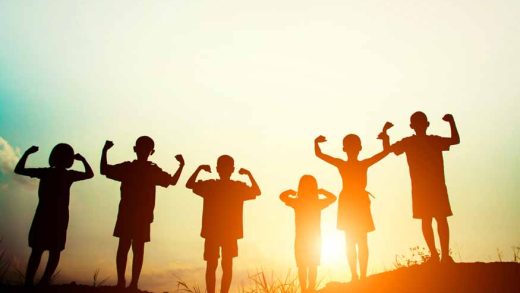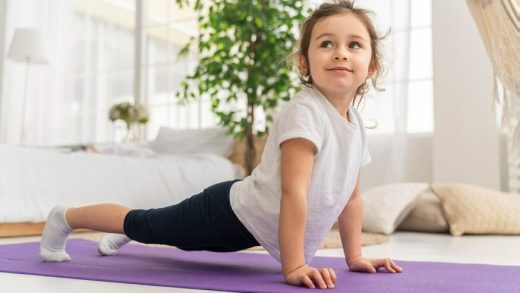Childhood is a period of rapid growth and development. Mastering motor skills is a crucial aspect of this journey. Fine and gross motor skills play a fundamental role in the child’s development. They help in their physical, cognitive, and social development. In this article, you will explore the significance of fine and gross motor skills for kids. How these skills differ and activities that promote healthy development in children.
Fine Motor Skills and Their Development
Fine motor skills involve the coordination of small muscles. It includes those in the hands and fingers, to perform precise movements. These skills are essential for tasks that need dexterity, control, and hand-eye coordination. Activities that engage fine motor skills include writing, tying shoelaces, and using scissors.
Here are some major developmental milestones for fine motor skills:
- Grasping Objects
- Hand-Eye Coordination
- Drawing and Writing
- Buttoning and Zipping
Infants develop the ability to grasp objects. It progresses from a reflexive grip to a more intentional grasp.
As children grow, they refine hand-eye coordination. It allows them to manipulate objects and engage in activities precisely. For example, activities such as stacking blocks.
Fine motor skills progress to enable children to hold and control writing tools. It leads to the development of drawing and writing abilities.
Children should master intricate movements like buttoning shirts and zipping zippers. It showcases advanced fine motor control.
Gross Motor Skills and Their Development
Gross motor skills involve larger muscle groups. They are associated with activities that need whole-body movement and coordination. These skills are critical for various actions. It includes walking, running, jumping, and maintaining balance.
Below are some major developmental milestones for gross motor skills:
- Rolling and Crawling
- Walking and Running
- Jumping and Hopping
- Throwing and Catching
Infants initially develop gross motor skills by learning to roll over and crawl. It marks the beginning of a whole-body movement.
Toddlers progress to walking and eventually running. It refines their ability to coordinate movements and maintain balance.
Jumping and hopping activities strengthen leg muscles and enhance coordination. It contributes to the development of gross motor skills.
Engaging in activities like throwing and catching helps refine hand-eye coordination. It also improves the ability to coordinate movements across the body.
The Interplay Between Fine and Gross Motor Skills
Fine and gross motor skills have an interconnection and often develop simultaneously. For instance, crawling contributes to the strengthening of arm muscles and hand-eye coordination. It lays the foundation for fine motor skills.
Following are some activities that support motor skills development:
- Fine Motor Activities:
- Finger painting
- Playing with building blocks
- Threading beads
- Puzzles and jigsaw games
- Using scissors for cutting paper
- Gross Motor Activities:
- Laying catch with a ball
- Riding a tricycle or bicycle
- Dancing and rhythmic movements
- Climbing on playground equipment
- Jumping on a trampoline
Importance of Motor Skills for Kids and Their Early Intervention
Identifying and addressing any delays in motor skills development early on is crucial. Early intervention can help children overcome challenges. It ensures they build a strong foundation for future academic and physical activities.
Here are the benefits highlighting the importance of motor skills development:
- Cognitive Development
- Academic Readiness
- Social Interaction
- Independence and Self-Care
- Emotional Regulation
- Preventing Developmental Delays
- Long-Term Health
- Building Confidence and Resilience
Motor skills development has a link to cognitive development. The process of mastering motor skills stimulates neural pathways in the brain. It enhances cognitive functions such as problem-solving, spatial awareness, and memory.
Children should be proficient in fine motor skills, especially those related to writing. Children with well-developed fine motor skills are likely to have academic readiness. They find it easier to hold a pencil and write legibly. They also engage in activities that promote literacy and numeracy.
Both fine and gross motor skills contribute to social development. Through play and physical activities, children learn to cooperate, share, and engage with their peers. These interactions foster the development of important social skills. They promote a sense of teamwork.
Mastering motor skills empowers children to become more independent in their daily activities. It includes activities from dressing themselves to feeding. Children with well-developed motor skills can take on more responsibilities. It boosts their self-esteem and confidence.
Engaging in physical activities supports emotional regulation. Movement helps children release energy, reduce stress, and manage emotions. Motor skills development provides a healthy outlet for self-expression and emotional well-being.
A delay in motor skills development can impact various aspects of a child’s life. Early identification and intervention can help address potential issues. It ensures that children have the necessary skills for a smooth transition into school and other environments.
Regular physical activity, which relies on well-developed motor skills, contributes to health. Children should engage in active play. So they are more likely to maintain a healthy lifestyle into adulthood. It reduces the risk of obesity and related health issues.
Mastering motor skills builds a child’s confidence and a sense of accomplishment. It includes climbing a structure, tying shoelaces, or completing a puzzle. It fosters resilience and a positive attitude toward facing new challenges.
Fine and gross motor skills are integral components of a child’s development. Provide a diverse range of activities that engage both fine and gross motor skills. This way, parents, caregivers, and educators can support children in reaching developmental milestones. It sets the stage for a healthy and active life. Observe and celebrate the child’s progress in these areas. It fosters a sense of accomplishment in them.
At Kangaroo Kids International Preschool, we encourage a positive attitude toward learning and physical activities in Kids. To learn more, contact us today.








